Hayabusa2
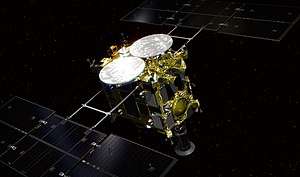 Artist's impression of Hayabusa2 | |
| Mission type | Asteroid sample return |
|---|---|
| Operator | JAXA |
| COSPAR ID | 2014-076A |
| SATCAT no. | 40319 |
| Website |
www |
| Spacecraft properties | |
| Manufacturer | NEC[1] |
| Launch mass | 609 kg (1,343 lb) |
| Dimensions |
Spacecraft bus: 1 × 1.6 × 1.25 m (3.3 × 5.2 × 4.1 ft) Solar panel: 6 m × 4.23 m (19.7 ft × 13.9 ft) |
| Power | 2.6 kW (at 1 au), 1.4 kW (at 1.4 au) |
| Start of mission | |
| Launch date | 3 December 2014, 04:22 UTC[2] |
| Rocket | H-IIA 202 |
| Launch site | LA-Y, Tanegashima Space Center |
| End of mission | |
| Landing date | December 2020 (planned) |
| Landing site | Woomera, Australia |
| Flyby of Earth | |
| Closest approach | 3 December 2015 |
| Distance | 3,090 km (1,920 mi)[3] |
| (162173) Ryugu orbiter | |
| Orbital insertion | June 27, 2018, 09:35 UTC[4] |
| Orbital departure | December 2019 (planned) |

Hayabusa2 162173 Ryugu Earth Sun
Hayabusa2 (Japanese: はやぶさ2, "Peregrine falcon-2") is an asteroid sample-return mission operated by the Japanese space agency, JAXA. It follows on from Hayabusa and addresses weak points identified in that mission.[5] Hayabusa2 was launched on 3 December 2014 and rendezvoused with near-Earth asteroid 162173 Ryugu on 27 June 2018.[6] It is in the process of surveying the asteroid for a year and a half, departing in December 2019, and returning to Earth in December 2020.
Hayabusa2 carries multiple science payloads for remote sensing, sampling, and four small rovers that will investigate the asteroid surface to inform the environmental and geological context of the samples collected.
Mission overview
Asteroid 162173 Ryugu (formerly designated 1999 JU3) is a primitive carbonaceous near-Earth asteroid. Carbonaceous asteroids are expected to preserve the most pristine materials in the Solar System, a mixture of minerals, ice, and organic compounds that interact with each other.[7] Studying it is expected to provide additional knowledge on the origin and evolution of the inner planets and, in particular, the origin of water and organic compounds on Earth.[8][7]
Initially, launch was planned for 30 November 2014,[9][10][11] but was delayed to 3 December 2014 04:22 UTC (4 December 2014 13:22:04 local time) on a H-IIA launch vehicle.[12] Hayabusa2 arrived at Ryugu on 27 June 2018,[6] and it is expected to survey the asteroid for a year and a half during which time it will collect samples three times.[7] The mission plan calls for it to depart in December 2019, and return the samples to Earth in December 2020.[11]
Compared to the previous Hayabusa mission, the spacecraft features improved ion engines, guidance and navigation technology, antennas, and attitude control systems.[13] A kinetic penetrator will be shot into the asteroid to expose pristine sample material.[11][8]
Funding and history
Following the partial success of Hayabusa, JAXA began studying a potential successor mission in 2007.[14] In July 2009, Makoto Yoshikawa of JAXA presented a proposal titled "Hayabusa Follow-on Asteroid Sample Return Missions". In August 2010, JAXA obtained approval from the Japanese government to begin development of Hayabusa2. The cost of the project estimated in 2010 was 16.4 billion yen (US$146 million).[15][16]
The primary contractor NEC built the 590 kg (1,300 lb) spacecraft, its Ka band communications system and a mid-infrared camera.[17]
Hayabusa2 was launched on 3 December 2014, arrived at asteroid Ryugu on 27 June 2018, and remained at a distance of about 20 km to study and map the asteroid. In the week of 16 July 2018, operations were begun to lower this hovering altitude.[18] On 21 September 2018, Hayabusa2 ejected the first two rovers, Rover-1A and Rover-1B, from about 55 meters altitude that fell independently to the surface of the asteroid.[19][20]
Spacecraft
| Hayabusa2 | Performance[21][22] |
|---|---|
| Ion thruster name | μ10 |
| Number of thrusters | 4 (one is a spare) |
| Total thrust | 30 mN |
| Specific impulse (Isp) | 3,000 sec |
| Acceleration | 49 μm/s2 |
| Power | 1,250 W |
| Spacecraft wet mass | 610 kg |
| Ion engine system dry mass | 66 kg |
| Ion engine system wet mass | 155 kg |
| Solar array | 23 kg |
| Xenon propellant | 66 kg |
| Hydrazine/MON-3 propellant | 48 kg |
The design of Hayabusa2 is based on the first Hayabusa spacecraft, with some matured improvements. [23][24] It has a mass of 610 kg (1,340 lb) with fuel,[24] and electric power is generated by bilateral solar arrays with an efficiency of 2.6 kW at 1 AU, and 1.4 kW at 1.4 AU.[24] The power is stored in eleven inline-mounted 13.2 Ah lithium ion batteries.[24]
- Propulsion
The spacecraft features four solar-electric ion thrusters for propulsion called μ10,[21] one of which is a backup. These engines use microwaves to convert xenon into plasma (ions), which is accelerated by applying a voltage from the solar panels and ejected out the back of the engine. The simultaneous operation of three engines generates thrusts of up to 28 mN.[24] Although this thrust is very small, the engines are also extremely efficient; the 66 kg of xenon[21] reaction mass can change the speed of the spacecraft by up to 2 km/s (4,500 mph).[24]
The spacecraft has four redundant reaction wheels and a chemical reaction control system featuring twelve thrusters for attitude control (orientation) and orbital control at the asteroid.[24][21] The chemical thrusters use hydrazine and MON-3, with a total mass of 48 kg of chemical propellant. [24]
- Communication
The spacecraft has two high-gain directional antennas for X band and Ka band.[21] Bit rates are 8 bps–32 Kbps.[24] The ground stations are the Usuda Deep Space Center, Uchinoura Space Center, NASA Deep Space Network and ESA's Malargü Station.[24]
- Navigation
The optical navigation camera telescope (ONC-T) is a telescopic framing camera with seven colors to optically navigate the spacecraft. [25] It works in synergy with the optical navigation camera wide-field (ONC-W2) and with two star trackers.[24]
In order to descend to the asteroid surface for sampling, the spacecraft will first release up to five target markers in the selected landing zones as artificial landmarks with highly reflective outer material that is recognized by a strobe light mounted on the spacecraft.[24] The spacecraft will also use its laser altimeter and ranging (LIDAR) and other sensors during sampling.
Instruments
The Hayabusa2 payload incorporates multiple scientific instruments:[26][27]
- Remote sensing: Optical Navigation Camera (ONC-T, ONC-W1, ONC-W2), Near-Infrared Camera (NIR3), Thermal-Infrared Camera (TIR), Light Detection And Ranging (LIDAR)
- Sampling: Sampling device (SMP), Small Carry-on Impactor (SCI), Deployable Camera (DCAM3)
- Four rovers: Mobile Asteroid Surface Scout (MASCOT), Rover-1A, Rover-1B, Rover-2.
Remote sensing
The Optical Navigation Cameras (ONCs) are used for spacecraft navigation during the asteroid approach and proximity operations. They will also remotely image the surface and search for interplanetary dust around the asteroid. ONC-T is a telephoto camera with a 6.35°×6.35° field of view and several optical filters carried in a carousel. ONC-W1 and ONC-W2 are wide angle (65.24°×65.24°) panchromatic (485–655 nm) cameras of nadir and oblique views, respectively.
The Near-Infrared Spectrometer (NIRS3) is a spectrograph operating at wavelengths 1.8–3.2 μm, intended for analysis of surface mineral composition.
The Thermal-Infrared Imager (TIR) is a thermal infrared camera working at 8-12 μm, using a two-dimensional microbolometer array. Its spatial resolution is 20 m at 20 km distance or 5 cm at 50 m distance. It will be able to determine surface temperatures in the range -40 – 150°C.[26]
The Light Detection And Ranging (LIDAR) instrument will measure the distance from spacecraft to the asteroid surface by measuring the time of flight of laser light reflection. It operates over the altitude range 30 m–25 km.[26]
When the spacecraft is closer to the surface than 30 m during the sampling operation, Laser Range Finders (LRF-S1, LRF-S3) are used to measure the distance and the attitude of spacecraft relative to the terrain.[28][29] Another device LRF-S2 monitors the sampling horn to trigger the sampling projectile.
LIDAR and ONC data will be combined to determine the detailed topography (dimensions and shape) of the asteroid. Monitoring of a radio signal from Earth will allow measurement of the asteroid's gravitational field.
Rovers
Hayabusa2 carries four small rovers to investigate the asteroid surface in situ,[30] and provide context information for the returned samples. All four rovers will move around by short hops, and none is equipped with wheels due to the minimal gravity of the asteroid. They will be deployed at different dates from about 60 m altitude and fall freely to the surface under the asteroid's weak gravity.[31] The first two rovers landed on asteroid Ryugu on 21 September 2018.[32]
MINERVA-II
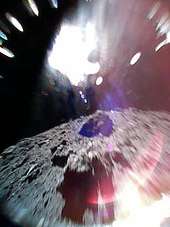
MINERVA-II is a successor to the MINERVA lander carried by Hayabusa. It consists of several separate subsystems.
MINERVA-II-1 is a container that deployed two rovers, Rover-1A and Rover-1B, on 21 September 2018.[33] It was developed by JAXA and the University of Aizu. The rovers are identical with a cylindrical shape, 18 cm diameter and 7 cm tall, and a mass of 1.1 kg (2.4 lb) each.[26][34] They move by hopping in the low gravitational field, using a torque generated by rotating masses within the rovers.[35] Their scientific payload is a stereo camera, wide-angle camera, and thermometers. Solar cells and double-layer capacitors provide the electrical power.
The MINERVA-II-2 container holds the ROVER-2, developed by a consortium of universities led by Tohoku University in Japan. This is an octagonal prism shape, 15 cm diameter and 16 cm tall (5.9 × 6.3 in), with a mass of about 1 kg (2.2 lb). It has two cameras, a thermometer and an accelerometer. It has optical and ultraviolet LEDs for illumination to detect floating dust particles. ROVER-2 carries four mechanisms to hop and relocate.
MASCOT
The Mobile Asteroid Surface Scout (MASCOT) was developed by the German Aerospace Center in cooperation with the French space agency CNES.[36] It measures 29.5 cm × 27.5 cm × 19.5 cm and has a mass of 9.6 kg (21 lb).[37] MASCOT carries four instruments: an infrared spectrometer (MicrOmega), a magnetometer (MASMAG), a radiometer (MARA), and a camera (MASCAM) that imaged the small-scale structure, distribution and texture of the regolith.[38] The rover is capable of tumbling once to reposition itself for further measurements.[30][39] It collected data on the surface structure and mineralogical composition, the thermal behaviour and the magnetic properties of the asteroid.[40] It has a non-rechargeable battery that allowed for operations for approximately 16 hours.[41] The infrared radiometer on the InSight Mars lander, launched in 2018, is based on the MASCOT radiometer.[42][43]
| Rover | Mass | Dimensions | Power | Science payload | Landing date | Status |
|---|---|---|---|---|---|---|
| Rover-1A Rover-1B | 1.1 kg | Diameter: 18 cm Height: 7 cm | Solar panels | Wide-angle camera, stereo camera, thermometers | Successful landing. Operational. | |
| Rover-2 | 1.0 kg | Diameter: 15 cm Height: 16 cm | Solar panels | Two cameras, thermometer, accelerometer. Optical and ultraviolet LEDs for illumination | To land in July 2019[24] | |
| MASCOT | 9.6 kg | 29.5 × 27.5 × 19.5 cm | Non-rechargeable battery[41] | Camera, infrared spectrometer, magnetometer, radiometer | Successful landing. Operated on battery for more than 17 h[45] |
Sampling
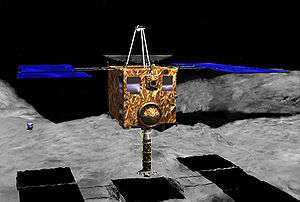
The spacecraft will collect three samples and store them in separate sealed containers inside the sample return capsule. The three desired samples are surface regolith that exhibits traits of hydrous minerals, regolith with either unobservable or weak evidence of aqueous alterations, and excavated sub-surface material.[46] The minimum desired amount per sampling is 0.1 g, but the system has capacity to collect up to 10 g per sample.[46] The first sampling is scheduled for late October 2018, the second for February 2019, and the third will be during April-May 2019 on excavated material dislodged by a kinetic impactor shot from a distance.[47]
Surface samples
Hayabusa2's sampling device is based on Hayabusa's. In late October 2018,[48] the spacecraft will approach the surface of the asteroid with a sampling horn. When the horn touches the surface, a projectile (5-gram tantalum bullet) will be fired at 300 m/s into the surface. The resulting ejecta particles are collected by a catcher at the top of the horn, which the ejecta will reach under their own momentum under microgravity conditions.
Subsurface sample
The third and last sample collection will take place during April-May 2019 of material deeper into the subsurface, which has not been subjected to space weathering. This requires removing a large volume of surface material with a substantial impactor. For this purpose, Hayabusa2 will deploy the Small Carry-on Impactor (SCI), a kinetic impactor consisting of a 2.5 kg (5.5 lb) copper projectile shot to the surface by an explosive propellant charge. Following SCI deployment, Hayabusa2 will leave behind a deployable camera (DCAM3)[Note 1] to observe and map the precise location of the SCI impact, while maneuvering to the far side of the asteroid in order to avoid debris from the impact.
Approximately 40 minutes after separation, when the spacecraft is at a safe distance, the penetrator will be fired into the asteroid surface by the detonation of 4.5 kg (9.9 lb) shaped charge of plasticized HMX for acceleration.[39][49] The copper impactor will be shot to the surface from an altitude of about 500 meters and it is expected to excavate a crater of about 2 meters in diameter and expose pristine material.[8] Hayabusa2 will wait about two weeks for the floating debris to clear from the site before descending into the newly-formed crater to retrieve a sample.[50]
Sample-return

The spacecraft will collect three samples and store them in separate sealed containers inside the sample-return capsule (SRC), which has a thermal insulation, 40 cm external diameter, 20 cm in height, and a mass of ~16 kg.[24]
At the end of the science phase in December 2019,[11] Hayabusa2 will use its ion engines for changing orbit and return to Earth.[51] When Hayabusa2 flies past Earth in December 2020, it will release the capsule spinning at one revolution per three seconds. The capsule will re-enter the Earth's atmosphere at 12 km/s and it will deploy a radar-reflective parachute at an altitude of about 10 km, and eject its heat-shield, while transmitting a position beacon signal.[24][51] The sample capsule will land in the Woomera Test Range in Australia.[52] The total flight distance would be 5,240,000,000 km.[24]
Once on Earth, any volatile substance will be collected before the sealed containers are opened.[46] The samples will be curated and analyzed at JAXA's Extraterrestrial Sample Curation Center,[53] where international scientists can request a small portion of the samples.
Status
On 21 September 2018, the Hayabusa2 spacecraft ejected the first two rovers, Rover-1A and Rover-1B, from about 55 meters altitude that fell independently to the surface of the asteroid.[19][20] They are functioning nominally and transmitting data.[32] The MASCOT rover deployed successfully on 3 October 2018 and operated for about 16 hours as planned.[54]
The first of three sample collections is planned for late October 2018,[55] the second for February 2019, and the third will be during April-May 2019 on excavated material dislodged by the impactor.[47]
Potential mission extension
When the spacecraft returns to Earth and delivers the sample capsule in December 2020, it is expected to retain 30 kg of xenon propellant, which can be used to extend its service and flyby new targets to explore.[56] One prime candidate is asteroid 2001 WR1 for a flyby on 27 June 2023.[56]
See also
Japanese minor body probes
Notes
References
- ↑ NEC. "JAXA Launches Hayabusa 2 Asteroid Probe: Press Releases - NEC". www.nec.com.
- ↑ "JAXA - Launch of "Hayabusa2" by H-IIA Launch Vehicle No. 26".
- ↑ "JAXA - Hayabusa2 Earth Swing-by Result".
- ↑ "Arrival at Ryugu!". JAXA Hayabusa2 Project. 29 June 2018. Retrieved 2018-07-15.
- ↑ Wendy Zukerman (18 August 2010). "Hayabusa2 will seek the origins of life in space". New Scientist. Retrieved 17 November 2010.
- 1 2 Clark, Stephen (28 June 2018). "Japanese spacecraft reaches asteroid after three-and-a-half-year journey". Spaceflight Now. Retrieved 2 July 2018.
- 1 2 3 Hayabusa2: Scientific importance of samples returned from C-type near-Earth asteroid (162173) 1999 JU3. S. Tachibana, M Abe, etal.
- 1 2 3 System design of the Hayabusa 2—Asteroid sample return mission to 1999 JU3. Yuichi Tsuda, Makoto Yoshikawa, Masanao Abe, etal. Acta Astronautica, volume 91, October–November 2013, pages 356-362. doi:10.1016/j.actaastro.2013.06.028
- ↑ JAXA Report on Hayabusa2, May 21, 2014. Archived 4 March 2016 at the Wayback Machine.
- ↑ Vilas, Faith (25 February 2008). "Spectral characteristics of Hayabusa 2 near-Earth asteroid targets 162173 1999 JU3 AND 2001 QC34". The Astronomical Journal. 135 (4): 1101. Bibcode:2008AJ....135.1101V. doi:10.1088/0004-6256/135/4/1101.
target for the planned Japanese mission Hayabusa2
- 1 2 3 4 Makoto Yoshikawa (6 January 2011). 小惑星探査ミッション「はやぶさ2」 [Asteroid Exploration Mission "Hayabusa2"] (PDF). 11th Symposium on Space Science (in Japanese). Retrieved 20 February 2011.
- ↑ Clark, Stephen (3 December 2014). "Hayabusa2 launches on audacious asteroid adventure". spaceflightnow. Retrieved 3 December 2014.
- ↑ "Spaceflight Now - Breaking News - Japan's next asteroid probe approved for development". spaceflightnow.com.
- ↑ "JAXA - Keiji Tachikawa - The President's New Year Interview, 2007 -". www.jaxa.jp.
- ↑ Zukerman, Wendy (18 August 2010). "Hayabusa2 will seek the origins of life in space". New Scientist. Retrieved 17 November 2010.
- ↑ "Asteroid probe, rocket get nod from Japanese panel". Spaceflight Now. 11 August 2010. Retrieved 29 October 2012.
- ↑ "Japan's next asteroid probe approved for development". Spaceflight Now. 29 January 2012. Retrieved 29 October 2012.
- ↑ Imaging Ryugu from an altitude of 6 km. JAXA press release. Jul. 25, 2018.
- 1 2 Hayabusa-2: Japan's rovers ready for touchdown on asteroid. Paul Rincon, BBC News. 20 September 2018.
- 1 2 "Japanese Probe Drops Tiny Hopping Robots Toward Big Asteroid Ryugu". Space.com. September 21, 2018.
- 1 2 3 4 5 Operation Status of Ion Engines of Asteroid Explorer Hayabusa2. (PDF) Nishiyama, Kazutaka; Hosoda, Satoshi; Tsukizaki, Ryudo; Kuninaka, Hitoshi. JAXA, January 2017.
- ↑ The Ion Engine System for Hayabusa2. The 32nd International Electric Propulsion Conference, Wiesbaden, Germany September 11 – 15, 2011.
- ↑ Hayabusa2: Scientific importance of samples returned from C-type near-Earth asteroid (162173) 1999 JU3. S. Tachibana, etal. Geochemical Journal, vol. 48, pp. 571—587. 2014.
- 1 2 3 4 5 6 7 8 9 10 11 12 13 14 15 16 Hayabusa2 Information Fact Sheet (PDF). JAXA. 29 July 2018.
- ↑ Preflight Calibration Test Results for Optical Navigation Camera Telescope (ONC-T) Onboard the Hayabusa2 Spacecraft. S. Kameda, H. Suzuki, T. Takamatsu, Y. Cho, T. Yasuda, M. Yamada, H. Sawada, R. Honda, T. Morota, C. Honda, M. Sato, Y. Okumura, K. Shibasaki, S. Ikezawa, S. Sugita. Space Science Reviews. July 2017, Volume 208, Issue 1–4, pp 17–31.
- 1 2 3 4 はやぶさ2情報源 Fact Sheet 小惑星到着直前版 (PDF) (in Japanese). JAXA. 19 April 2018. Retrieved 20 June 2018.
- ↑ "Current status of the asteroid explorer, Hayabusa2, leading up to arrival at asteroid Ryugu in 2018" (PDF). JAXA. 14 June 2018. Retrieved 20 June 2018.
- ↑ Terui, Fuyuto; Tsuda, Yuichi; Ogawa, Naoko; Mimasu, Yuya (July 2014). 小惑星探査機「はやぶさ2」の航法誘導制御における自動・自律機 [Autonomy for Guidance, Navigation and Control of Hayabusa2] (PDF). Artificial Intelligence (in Japanese). Japanese Society for Artificial Intelligence. ISSN 2188-2266. Retrieved 9 July 2018.
- ↑ Yoshikawa, Makoto (16 January 2012). はやぶさ2プロジェクトについて (PDF). Retrieved 9 July 2018.
- 1 2 A detailed look at Japan's Hayabusa2 asteroid exploration mission. Phillip Keane, SpaceTech. 21 June 2018.
- ↑ Okada, Tatsuaki; Fukuhara, Tetsuya; Tanaka, Satoshi; Taguchi, Makoto; Imamura, Takeshi; Arai, Takehiko; Senshu, Hiroki; Ogawa, Yoshiko; Demura, Hirohide; Kitazato, Kohei; Nakamura, Ryosuke; Kouyama, Toru; Sekiguchi, Tomohiko; Hasegawa, Sunao; Matsunaga, Tsuneo (July 2017). "Thermal Infrared Imaging Experiments of C-Type Asteroid 162173 Ryugu on Hayabusa2". Space Science Reviews. 208 (1–4): 255–286. Bibcode:2017SSRv..208..255O. doi:10.1007/s11214-016-0286-8.
- 1 2 They Made It! Japan's Two Hopping Rovers Successfully Land on Asteroid Ryugu. Meghan Bartels, Space.com. 22 September 2018.
- ↑ Yoshimitsu, Tetsuo; Kubota, Takashi; Tsuda, Yuichi; Yoshikawa, Makoto. "MINERVA-II1: Successful image capture, landing on Ryugu and hop!". JAXA Hayabusa2 Project. JAXA. Retrieved 24 September 2018.
- ↑ Minoru Ōtsuka (28 March 2016). 車輪なしでどうやって移動する?ローバー「ミネルバ2」の仕組み(後編). MONOist. Retrieved 22 June 2018.
- ↑ Yoshimitsu, Tetsuo; Kubota, Takashi; Adachi, Tadashi; Kuroda, Yoji (2012). "Advanced robotic system of hopping rovers for small solar system bodies" (PDF). International Symposium on Artificial Intelligence, Robotics and Automation in Space. Archived from the original on 25 March 2016.
- ↑ DLR Asteroid Lander MASCOT Archived 15 November 2012 at the Wayback Machine.
- ↑ "Hayabusa2/MASCOT at a glance - Technical specifications and mission timeline". DLR. Retrieved 22 June 2018.
- ↑ A Mobile Asteroid Aurface Scout (MASCOT) for the Hayabuse 2 Mision to Ryugu. (PDF) R. Jaumann, J.P. Bibring, K.H. Glassmeier, at al. EPSC Abstracts. Vol. 11, EPSC2017-548, 2017. European Planetary Science Congress 2017.
- 1 2 Graham, William (2 December 2014). "Japanese H-IIA kicks off Hayabusa2's asteroid mission". NASASpaceFlight.com. Retrieved 4 December 2014.
- ↑ MASCOT—The Mobile Asteroid Surface Scout Onboard the Hayabusa2 Mission. Tra-Mi Ho, Volodymyr Baturkin, Christian Grimm, Jan Thimo Grundmann, Catherin Hobbie, Eugen Ksenik, Caroline Lange, Kaname Sasaki, Markus Schlotterer, Maria Talapina, Nawarat Termtanasombat, Elisabet Wejmo, Lars Witte, Michael Wrasmann, Guido Wübbels, et al. Space Science Reviews. July 2017, Volume 208, Issue 1–4, pp 339–374. doi:10.1007/s11214-016-0251-6
- 1 2 Are Japanese hopping robots safe on asteroid Ryugu? Mike Wall, Space.com. 21 September 2018.
- ↑ InSight: A Geophysical Mission to a Terrestrial Planet Interior (PDF). Bruce Banerdt, NASA's Jet Propulsion Laboratory. March 7, 2013.
- ↑ Grott, M.; Knollenberg, J.; Borgs, B.; Hänschke, F.; Kessler, E.; Helbert, J.; Maturilli, A.; Müller, N. (1 August 2016). "The MASCOT Radiometer MARA for the Hayabusa 2 Mission". Space Science Reviews. 208 (1–4): 413–431. Bibcode:2017SSRv..208..413G. doi:10.1007/s11214-016-0272-1.
- ↑ See the First Photo of Asteroid Ryugu from the Hopping MASCOT Lander! Tariq Malik, Space.com. 3 October 2018.
- ↑ "MASCOT Lander on Twitter".
- 1 2 3 Bringing back a C-type asteroid sample. (PDF, in Japanese). Shogo Tachibana. JAXA. 2013
- 1 2 Hayabusa2 Mission Schedule. JAXA. Accessed 4 October 2018.
- ↑ Hayabusa-2: Japan hopes for historic asteroid landing. BBC News. 21 September 2018.
- ↑ Saiki, Takanao; Sawada, Hirotaka; Okamoto, Chisato; Yano, Hajime; Takagi, Yasuhiko; Akahoshi, Yasuhiro; Yoshikawa, Makoto (2013). "Small carry-on impactor of Hayabusa2 mission". Acta Astronautica. 84: 227. Bibcode:2013AcAau..84..227S. doi:10.1016/j.actaastro.2012.11.010.
- ↑ "Small Carry-on Impactor (SCI): Its scientific purpose, operation, and observation plan in Hayabysa-2 mission" (PDF).
- 1 2 Major onboard instruments - Re-entry Capsule. Accessed: 2 September 2018.
- ↑ What's the benefit of sample-return? Jason Davis, The Planetary Society. 5 July 2018.
- ↑ Extraterrestrial Sample Curation Center - JAXA.
- ↑ MASCOT lands safely on asteroid Ryugu. Press release, DLR Press Portal. 03 October 2018.
- ↑ Hayabusa 2: Japan probe to send lander to asteroid. Paul Rincon, BBC News. 2 October 2018.
- 1 2 Hyabusa2 extension plan: Asteroid selection and trajectory design. Bruno Victorino Sarli, Yuichi Tsuda. Acta Astronautica, vol. 138, pp. 225-232, September 2017. doi:10.1016/j.actaastro.2017.05.016.

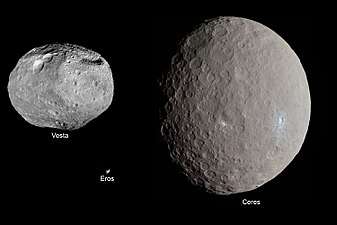

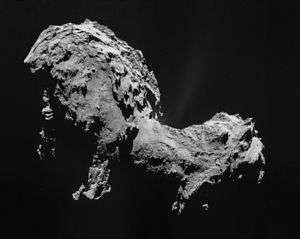
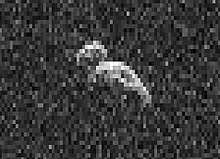

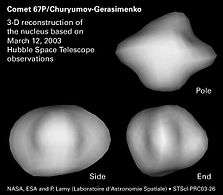
.png)